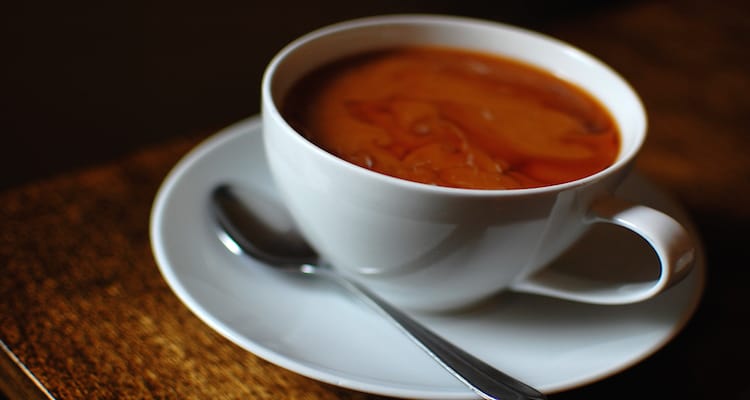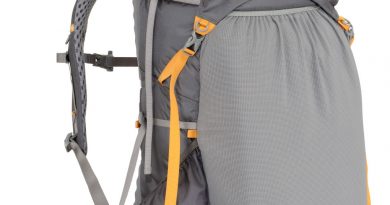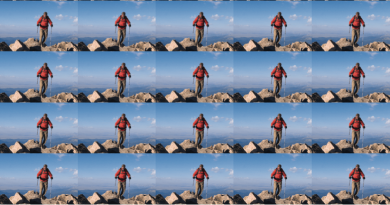8 Common Fitness Myths Debunked
Busting common myths about stretching, caffeine, and more.
1. Myth: If you aren’t sweating, you aren’t working hard enough.
Let’s be honest, you can work up a sweat just lounging around on a hot summer day. You don’t even have to be moving. That’s because your body produces sweat to cool itself down. According to an article published by the National Institute of Health, sweating is not a gauge of how hard you are working but rather a gauge of how hot your core temperature is.
Both body temperature and regulation thereof are unique to every person. An individual who is more fit will require more strenuous exercise to raise his core body temperature than a person who just started exercising regularly. You might also have a naturally higher body temperature or more sweat glands in your body, both of which induce more sweating.
Furthermore, dehydration affects the amount of sweat you produce. After all, sweat comes from excess water in your system and when it’s running low on fluids, the body has less water to expel. So the next time you’re working out and the person next to you is soaking wet, don’t immediately assume your workout was any less beneficial.
2. Myth: No pain, no gain.
This is the motto that many gym buffs ascribe to, hoping that their agony is bringing them closer to their fitness goals. A better motto would be: No “good” pain, no gain.
Researchers at John’s Hopkins University say there is a difference between “good” and “bad” pain. Athletes refer to good pain as “the burn.” It is the mild, short-lived burning sensation felt in the muscles during activity, signaling improvement. During a workout, little tears in your muscles occur making it okay for some discomfort and fatigue to exist shortly after exercise.
“Bad” pain, on the other hand, happens when stress accumulates over time or the body endures too much stress too quickly. This type of pain feels markedly different from the good burning sensation; pulling or tearing feelings and anything that feels sharp or stabbing characterizes it. This pain shows up in swollen joints, ligaments and muscles that are tender to the touch, or even bruised, days after exercise. Sharp pains, especially in your back, head, neck or ankles is an immediate indication to top what you are doing. The more you exercise, the better attuned your body becomes to reading the difference between “good” and “bad” pain.
3. Myth: You always need to stretch before you exercise.
Stretching before exercising lessens the chance of injury…right? Not so fast. According to Dr. Ian Shrier, former president of the Canadian Academy of Sports Medicine, there’s no clear link between pre-exercise stretching and injury prevention. In some cases, it may actually be counterproductive, resulting in the temporary loss of up to five percent of muscle strength. This, coupled with the potential for too much muscle flexibility, results in a higher likelihood of straining or tearing muscles and ligaments.
Instead of a pre-exercise stretch, do five minutes of easy cardio matching the exercise you will perform. It’ll prepare your muscles for more strenuous work. Post-exercising is when you’ll really want to limber up, either by stretching for 5-10 minutes or using a foam roller to reduce lactic acid buildup in muscles.
4. Myth: Caffeine dehydrates you.
Time and time again, you’ve been told that coffee is a diuretic and it will dehydrate you. But if you wake up to a cup of joe every morning anyway, that may not be true. Researchers at the University of Birmingham in the U.K. put moderate coffee- and caffeinated tea-drinkers through a study to test how caffeine affects hydration. The study showed that caffeine did not make the body flush out more fluid than when the subjects consumed water and non-caffeinated beverages. These findings suggest that if you are a habitual caffeine drinker, you may build up a tolerance to the diuretic effects.
Consuming a small amount of caffeine pre-exercise leads to a better workout. Caffeine improves blood circulation, which allows the body to transfer more oxygen to your muscles, ultimately allowing you to push your workout a bit harder. Some even say caffeine before a workout allows you to burn more calories. Post-workout, caffeine, in combination with carbohydrates, is also believed to result in a 66 percent increase in muscle glycogen (fuel for your muscles) after an intense workout.
5. Myth: Fat makes you fat.
Over the past 30 years, the obesity rate in the United States have skyrocketed while the percentage of calories from fatty foods has gone down. Harvard’s School of Public Health attributes this trend to eating and drinking more calories than you need from any one source. The solution? Avoid the dreaded “trans fats” made through hydrogenation (such as those found in most packaged foods and margarine), which raise your bad cholesterol and your risk of heart disease.
On the other hand, he suggests consuming monounsaturated and polyunsaturated fats, found in olive oils, almonds, avocadoes and seeds. Fats are essential to our health, assisting in metabolic processes and allowing us to maintain a lean body. Fats are responsible for providing us with a level of energy and a source to absorb more beneficial nutrients into the body. So don’t be afraid to eat your fats in moderation.
6. Myth: An ice bath will speed your recovery.
How pleasant does a ten or fifteen minute soak in a tub full of icy 40-degree Fahrenheit water sound? Pretty horrible? You’re right, and a study at the University of New Hampshire found that the efficacy of an ice bath isn’t valuable enough to merit the subjection of your body to this frigid nightmare.
Researchers had subjects soak in an ice bath for 20 minutes after strenuous exercise and tested leg muscles for soreness, strength and swelling. The thigh circumferences (indicating swelling) were no different between the subjects who had and had not ice bathed. While the concentration of CCL2 (a marker for muscle inflammation), was slightly lower in those who had used the cold tub, the levels were not statistically significant. Lastly, a strength test proved no difference in strength for the subjects. Unless you’re an ultraathlete performing continuous daylong activity, this numbing treatment won’t leave you feeling any hotter.
7. Myth: You shouldn’t work out on an empty stomach.
Most people believe you need some food in your system to sustain an effective workout. And yes, if you eat before a workout, that food will provide energy for your muscles. However, even if you don’t eat, your body still will have enough fuel. Instead of burning the caloric energy, it begins to convert your fat stores instead. According to a study from the British Journal of Nutrition, working out on an empty stomach burns almost 20 percent more fat than eating before a workout. Plus, those who worked out in the morning on an empty stomach weren’t any more likely to consume additional calories or experience increased appetite throughout the day. Kick your fat burning ability into high gear, and save the snack for after you hit the trail, the road or the gym.
8. Myth: You should do cardio before strength training.
Strength training is all about form, and incorrect form is dangerous. Most people believe weights will tire them out before cardio when, in fact, it’s the opposite. Cardio results in fatigue, which means you will likely be unable to perform strength exercises with correct form. Exercise physiologist Marta Montenegro cautions this is how people get seriously hurt. Instead, try performing your strength regimen before cardio. This will tap your anaerobic energy systems, ultimately allowing you to burn more fat during a cardio workout.
The article was originally seen at https://www.backpacker.com/skills/8-common-fitness-myths-debunked
Originally posted 2018-04-30 15:20:34.




